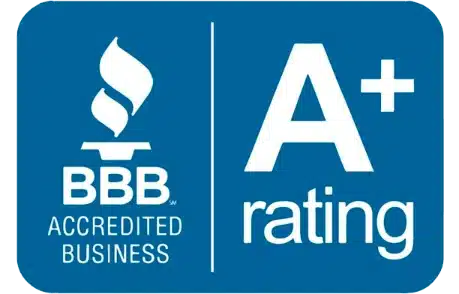
Episode 33 – 5 Things That Will Kill Your Bling Business
This past weekend I (Mark) took an extended weekend and went to Orlando. In the hotel I was staying in were tons of kids and parents who were there for sports competitions. The one thing that really stood out to me is the number of parents who had bling shirts supporting their kids. It just goes to show how huge a business bling is, and rhinestone apparel is not that inexpensive either – especially when you get into jackets, hoodies, etc. These are big-ticket items.
Bling can be a profitable business – if you do it right and avoid the five mistakes we’re going to talk about.
Whatever bling machinery you use, the opportunities are similar and the learning curve is not that hard (compared to other options), but the problems companies face will also be the same.

1. Where you get your customers
You don’t know where or how you’re going to get your customers. It can be stressful thinking about sales. What you need to do is develop a plan that works for you. Do you like going to events and talking to people? Do you already know internet marketing? Do you know a lot of people in your community, are you a part of any club, or organization? Write down your plan – how am I going to get some customers and get started?
Where do you get customers? Perhaps your kids play sports. You can go to the school or team your kids are a part of, and you just spread the word: “Hey I’m doing this business, and can make all kinds of rhinestone apparel. What do you think?” And it may be that they already buy online and would be willing to switch over to you because they know you. Or they didn’t know where to get bling shirts.
We’re not going to go too deep into this as we just finished a trilogy on Making More Money Next Month, so make sure you take a few minutes to read through those. But what you want to do is write down where you’re going to get your customers. Examples: “I think I can get 25 customers a month from my daughter’s dance school.” “I think I can sell shirts to the cheerleaders at my son’s high school.” Keep it simple, then you have somewhere to start and after you can develop more of a plan if you want.
Don’t just buy your equipment and supplies, and set up a Facebook page and expect customers to find you.
2. Cash Flow
You’ve got to be prepared to pay your bills – keep the lights on and run your business while you still live your life. Perhaps you have the capital to start a business full-time, or perhaps you just start part-time.
And there’s both cash and cash-flow to consider. Cash is the amount of funds you have on hand – to purchase the equipment you need and have the ability to pay for rent, supplies, food, your bills, etc. for x months. We talk a lot about ROI – if you sell X amount of shirts, you can pay for your machine. The thing to consider though is that you may not be paying off your machine in the first three months. You’ve got to have enough cash to keep you going for a short period of time. When you think about cash it doesn’t just have to be what you have in the bank, it can be borrowed money. Most businesses start with borrowed money.
We want you to be optimistic, but not dangerously optimistic. We want you to be wildly successful, but know that it might not happen in the first 90 days.
Cash-flow is being able to manage the cash coming in and going out. It’s the payment on your loans. Cash-flow is notoriously a business killer. You may have lots of invoices out there, and people that owe you money, but not enough to pay the bills that you have due at the end of the month. Sometimes what happens is that you grow a little too fast – perhaps you’re just working part-time and doing $1,000 in sales a month, and that’s enough to cover your costs, but then a university comes to you and wants $5,000 worth of jackets and wants it done by the end of the month, and they want to pay with a purchase order, but because this money is coming from the government, it’s most likely not going to be paid on time, so it might be 45-60 days later when you get your check – do you have the money in the meantime? To buy those jackets, rhinestones, pay the rent?
You have to manage your income and expenses. And be prepared that if you do work for someone, they might not pay you. So if you do a job with a purchase order, understand that there is a risk. Especially if you’re a small business we recommend that you take a deposit. If you can’t handle the cash-flow issues from a big job, just pass and that way you’ll be in business later and will likely get those opportunities for big jobs and can manage them properly. Missing an opportunity can be frustrating, but you don’t want to be out of business.
3. Inventory
We see this almost every day. Someone orders a bag of rhinestones and has us do overnight shipping. This means that the shipping costs 3 times as much as the product. If this is your main business, these are the supplies you want to have on hand all the time. And most of the time it’s a small bag of rhinestones they’re ordering, and the reason they don’t order the large bag, goes back to cost – they don’t have the cash on-hand to cover ordering a large bag.
When cash-flow is not managed properly it often leads to not having the proper inventory, and then they eat up part of their profits with shipping costs. Then they have less cash and are stressed because although you tell the UPS guy to come tomorrow, you can’t always guarantee that he can or will.
If you’re in the bling business you should never run out of transfer paper, or the most commonly used rhinestones. We talked about this in our blog post Steps for Success in a New Year, you should have a 60 day supply of all the major things you use. Rhinestones and transfer tape don’t have expiration dates.
Sometimes what happens is that you go to a show/event and you get that big order, or you’re in the middle of doing that order, and you realize you don’t have enough rhinestones. It’s at that moment when you’re desperate to get those items so that you can finish the order that you’ll be charged like crazy for shipping. When you don’t plan the job well enough or are counting your stones you end up sacrificing profits to get the job done.
You should be allocating the money in advance instead of waiting to get a customer for a deposit and using that money to order supplies. It’s good to get the deposit to cover the supplies, but you should already have the money to pay for them. Or even better, you already have the supplies on the shelf.
Managing rhinestone inventory can be challenging. We sell 30 colors in 7 sizes in stones, and then there are studs in 30 colors and 7 sizes, and nail heads in 35 colors and 4 sizes. You don’t have to carry all of them, but you should maintain a strong inventory of your most popular items. If you do business with a school or university, make sure you have their colors. Then the colors you don’t use, you can order them as needed, but make sure you include that regular shipping time when you calculate the delivery date to your customer.
You could tell your customers “These are the 7-10 colors I have in stock, because they’re the most popular colors, if you want different colors, here’s what’s going to happen – I can order them in, it’ll take a little bit more time to complete the shirt, and because I’ll probably have some left over, and they’re not as popular I’ll charge you a little bit more.” If they want it sooner, you can say “Sure I can do that. But what it means is that I have to have them shipped overnight from the warehouse, and there’s going to be a surcharge for that.” Be transparent and open about it.
4. Pricing
Small businesses, and specifically embroidery and bling, undervalue their work tremendously. We just had someone on our Facebook group, who had done some Prospangle work, with very nice designs 3-4 colors, and charged $35/shirt. And there were some incredulous responses like “Wow, I could never charge $35/shirt.” Most people will figure out how much they personally want to make an hour (~$20) and then simply add in the cost of the materials, or they’ll search their area for the cheapest competition and that’s what they’ll charge. That is a policy that will not make you any money. It’s okay to figure out how much you want to make an hour and work the cost from there, as long as it’s a large number because you also have to pay your bills.
Do the math, and if you need to make $150/hour to pay for everything, then your bling needs to cost at least that much. When we consider cost, we take the opposite approach – what is the most expensive version of this out on the marketplace – and that’s what we charge. You only know you’ve reached the limit on what the market will bear when you get someone who says, “Oh my gosh, that’s way too much. I’m not going to place the order.” All you’re doing otherwise is feeling bad about charging someone for your work.
You’re taking a risk, you had to buy that equipment, you had to digitize those designs, you found the customer – all these things are intangibles that have to go into the value of the product. Don’t undercharge for what you do. If you go into a retail store and see a branded jacket for $85, perhaps you’re not going to charge quite that much, but you’re still creating an original design, you’re using quality rhinestones, that’s worth $55-65. Even though it might cost you $10 for the jacket and $1.80 in spangles and $0.40 in transfer tape, and it takes you 25 minutes to do the design, and a few minutes for the heat pressing, that’s not the value of the product. The value of the product is what that customer gets.
If you’re trying to offer the best price (lowest) in the market, everything else you use is also going to have to reflect that – cheap shirts. And cheaper shirts don’t decorate as well, rhinestones might fall off, the shirt may not wash well. All that comes together to produce a product that, are you going to be that proud of? As opposed to a shirt that might cost twice as much for you to order (which may still only be $5), and you make a dense rhinestone design with quality stones. It looks great and feels great, you’re proud to sell it, and your customers are happy with the product so they continue to order from you and refer others to you (that’s where we get into the marketing chain).
If you’re in the bling business the cost of the supplies are not relevant to your business as long as you’re charging the right price. It’s not worth it trying to save $5 here and there and really fighting for that because you’re undervaluing your product (see Tripping over Pennies for more details).
5. Over promising
An example of over promising would be someone comes into the shop and says I need this order by Monday, and it’s already Wednesday. So you’ve got 4 days to get the order done, but you don’t have the shirts or even the rhinestones in stock, and you haven’t got the sizes from the customer. But you want the business, so you say “I will absolutely get those to you by Monday.” Now you’re stressed the entire time because you need to have the supplies delivered by Friday, but there’s a problem with the weather and they don’t arrive, and now you can’t deliver and you have an upset customer. You’re probably going to lose that customer, and they may leave a bad review.
There are so many things that could go wrong:
- You get the wrong blanks
- The supplier is out of stock
- You call for a rush delivery and it’s going to be $50 for delivery
- Your area is not available for Saturday delivery
- One of your employee quits
- Your kid gets the flu
- You ruin the first three shirts
- Your software messes up
- Your computer goes down
These things hardly ever happen, but will typically happen when you promise someone something by Monday, and you don’t have everything in stock that you need. You put yourself in a high-risk situation when there’s no wiggle room.
We have a lot of customers that don’t accept rush jobs. Or if they do, they manage their customer’s expectation: “I’ll push for Monday, but if something goes wrong, is it okay if I deliver on Tuesday or Wednesday?” If you know you can get a job done, typically within 4 days, it’s better to give them the expectation of 5 days, and delivering in 4. Under promise and over deliver. You’re going to lose a lot fewer sales than you think if you have a set time, and you add one day to it. Then every time you deliver early you’re going to get that as part of your review.
You already have enough stress in owning your own business, don’t add to it by over promising. The reason you started the business is that it’s fun, or you wanted control over your time. The minute you start stressing it’s no longer fun, and you’re no longer in control – you’ve given up control to your customer.
Set the expectations, make sure customers know what’s involved with a rush job, and don’t be afraid to say no.
Quick recap: Have some sort of a plan even if it’s simple. Have cash and cash-flow, and pay close attention to it. Keep an inventory and don’t run out of the basics. Make sure you charge the right value. Don’t over promise and try to deliver too fast.
Have a good business!
- Join us on Facebook: Custom Apparel Startups
- Listen to more podcasts: caspodcast.com
- Watch some sales and business webinars: caswebinars.com
- Learn more about Rhinestone Machines, Embroidery Machines, Direct to Garment Printing and more at coldesi.com









